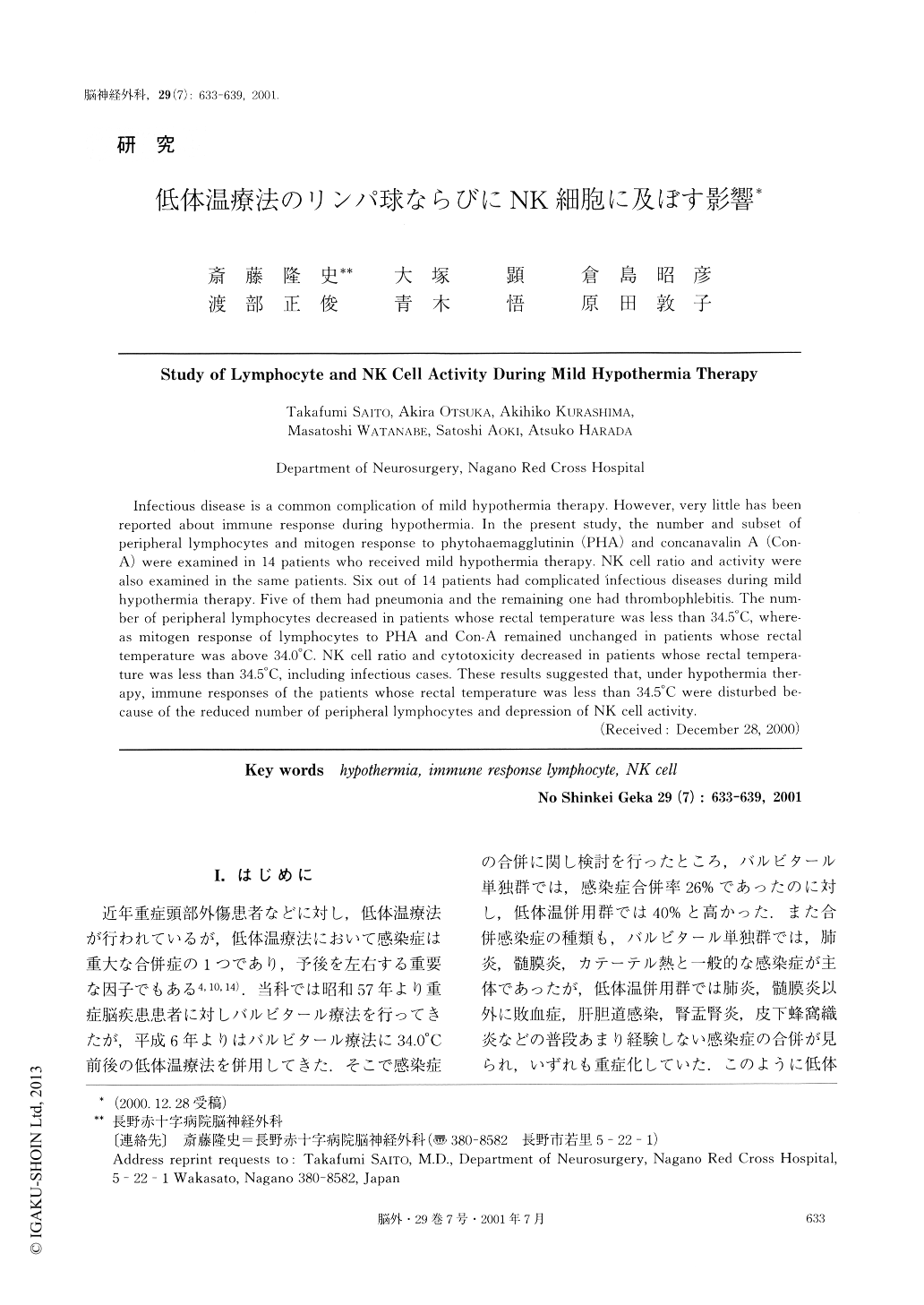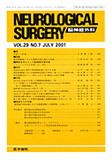Japanese
English
- 有料閲覧
- Abstract 文献概要
- 1ページ目 Look Inside
I.はじめに
近年重症頭部外傷患者などに対し,低体温療法が行われているが,低体温療法において感染症は重大な合併症の1つであり,予後を左右する重要な因子でもある4,10,14).当科では昭和57年より重症脳疾患患者に対しバルビタール療法を行ってきたが,平成6年よりはバルビタール療法に34.0℃前後の低体温療法を併用してきた.そこで感染症の合併に関し検討を行ったところ,バルビタール単独群では,感染症合併率26%であったのに対し,低体温併用群では40%と高かった.また合併感染症の種類も,バルビタール単独群では,肺炎,髄膜炎,カテーテル熱と一般的な感染症が主体であったが,低体温併用群では肺炎,髄膜炎以外に敗血症,肝胆道感染,腎盂腎炎,皮下蜂窩織炎などの普段あまり経験しない感染症の合併が見られ,いずれも重症化していた.このように低体温療法は感染症に対する抵抗力を低下させると考えられるが,その機序に関する報告はない.今回われわれは,長期間の低体温が末梢血リンパ球ならびにNK細胞に及ぼす影響を検討したので報告する.
Infectious disease is a common complication of mild hypothermia therapy. However, very little has beenreported about immune response during hypothermia. In the present study, the number and subset ofperipheral lymphocytes and mitogen response to phytohaemagglutinin (PHA) and concanavalin A (Con-A) were examined in 14 patients who received mild hypothermia therapy. NK cell ratio and activity werealso examined in the same patients. Six out of 14 patients had complicated infectious diseases during mildhypothermia therapy, Five of them had pneumonia and the remaining one had thrombophlebitis. The num-ber of peripheral lymphocytes decreased in patients whose rectal temperature was less than 34.5℃, where-as mitogen response of lymphocytes to PHA and Con-A remained unchanged in patients whose rectaltemperature was above 34.0℃. NK cell ratio and cytotoxicity decreased in patients whose rectal tempera-ture was less than 34.5℃, including infectious cases. These results suggested that, under hypothermia ther-apy, immune responses of the patients whose rectal temperature was less than 34.5℃ were disturbed be-cause of the reduced number of peripheral lymphocytes and depression of NK cell activity.

Copyright © 2001, Igaku-Shoin Ltd. All rights reserved.


